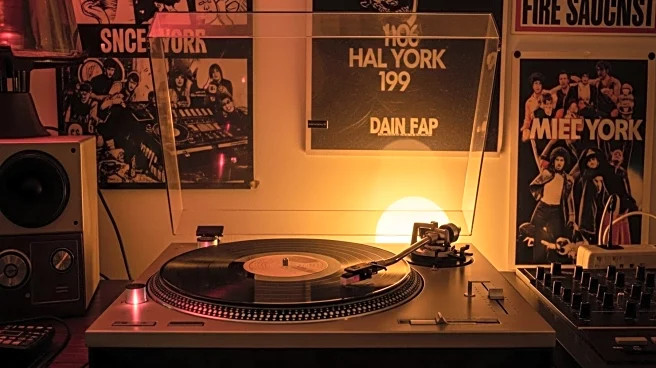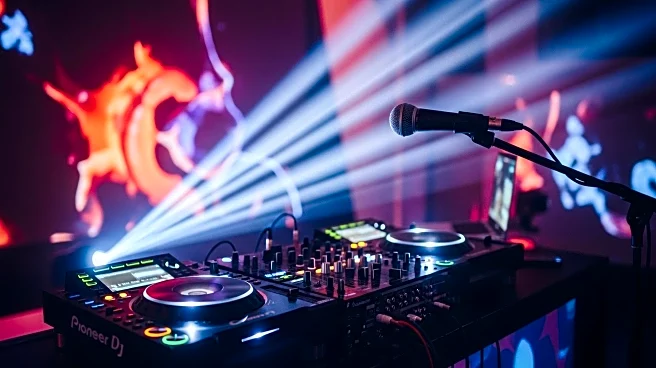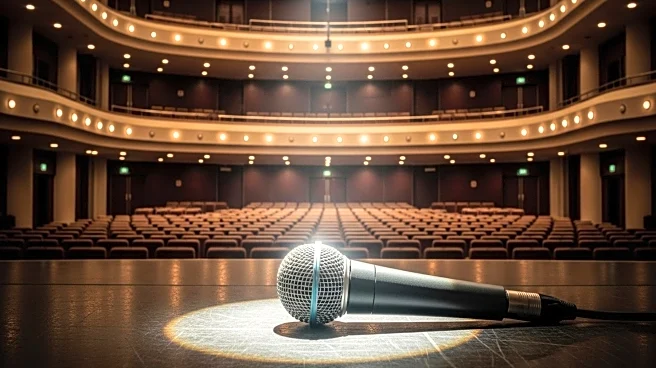What's Happening?
Mark Ronson, a Grammy and Academy Award-winning producer and songwriter, has released a memoir titled 'Night People: How to Be a DJ in '90s New York City'. The book chronicles Ronson's experiences as a nightclub DJ in New York's underground scene during the early 1990s. It provides a glimpse into his life before achieving fame, capturing the essence of being a 'club kid' in a city that was yet to undergo significant changes in the late 1990s and early 2000s. The memoir is available for purchase on various platforms, including Amazon, BookShop.org, and Barnes & Noble, with options for signed copies and audiobook formats.
Why It's Important?
The release of Mark Ronson's memoir offers insights into the cultural and musical landscape of New York City during a transformative period. As a prominent figure in the music industry, Ronson's reflections provide valuable context for understanding the evolution of nightlife and music scenes. This memoir not only appeals to fans of Ronson's work but also to those interested in the history of New York's club culture. It highlights the personal journey of a successful artist, offering inspiration and a deeper understanding of the challenges and experiences that shaped his career.
What's Next?
With the memoir now available, readers and fans can expect to gain a more intimate understanding of Mark Ronson's early influences and the environment that shaped his musical style. The book's release may also spark renewed interest in the 1990s club scene, potentially leading to discussions or events centered around this era. Additionally, Ronson's memoir could inspire other artists to share their own stories, contributing to a broader narrative of the music industry's evolution.
Beyond the Headlines
Mark Ronson's memoir not only serves as a personal narrative but also as a cultural document that captures a pivotal time in New York City's history. The book may prompt readers to reflect on the broader implications of urban development and cultural shifts that have transformed cities like New York. It also raises questions about the preservation of cultural heritage and the impact of gentrification on artistic communities.










